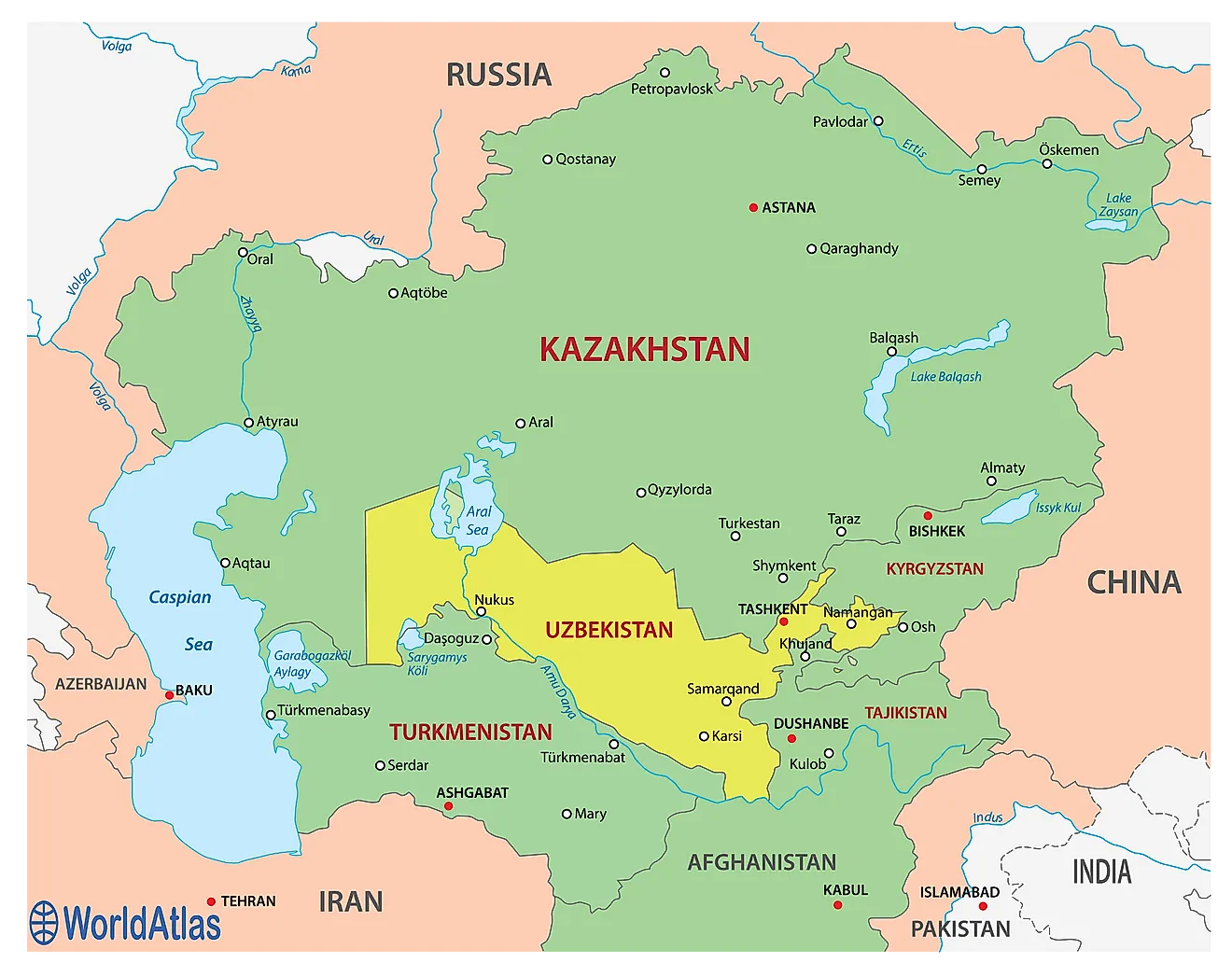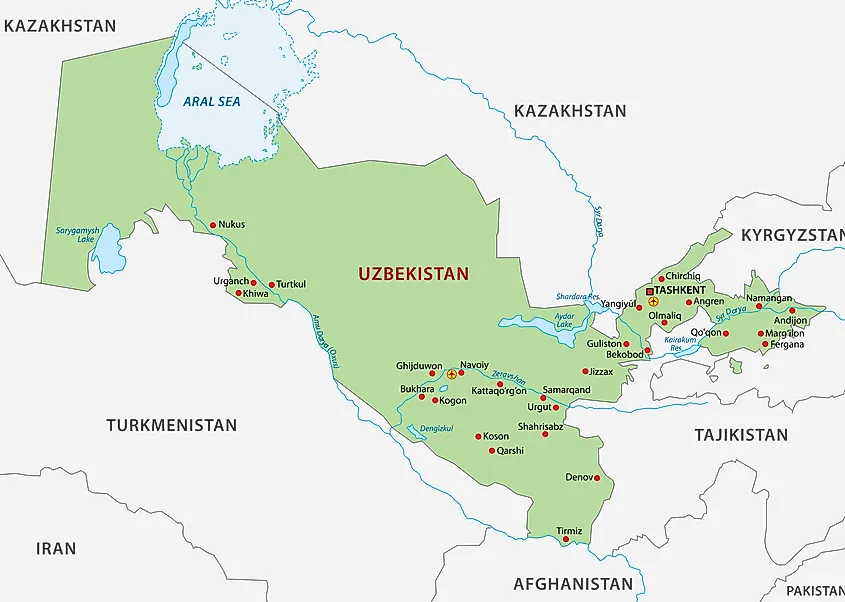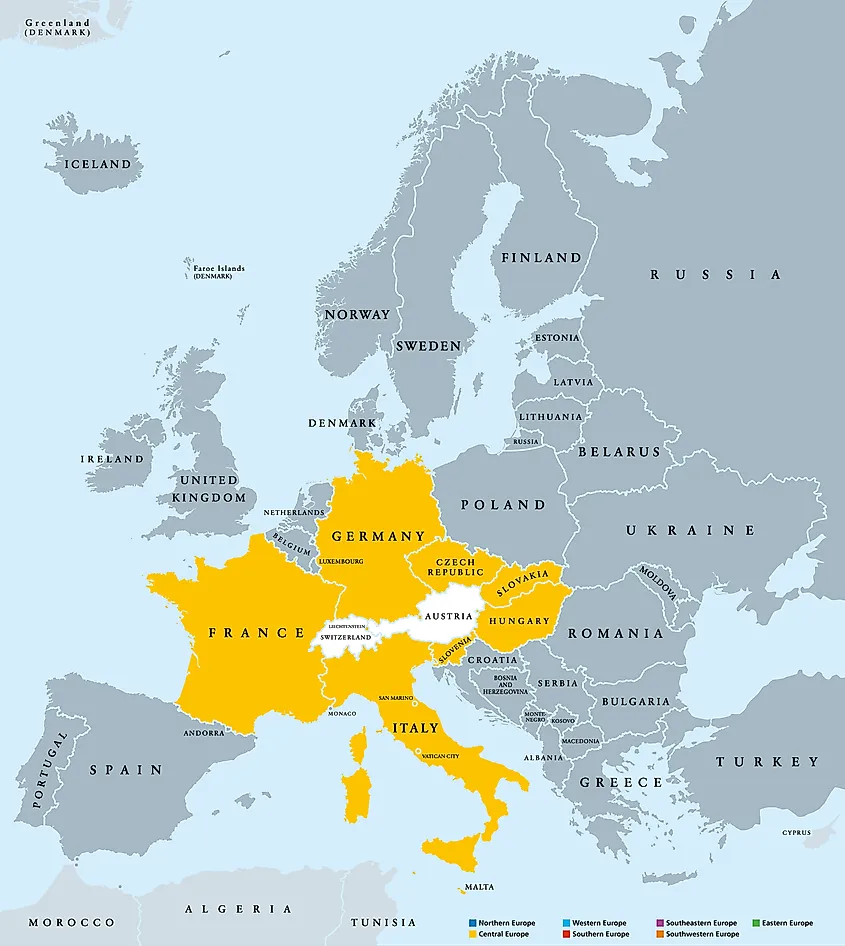The World's Two Double Landlocked Countries

- Uzbekistan and Liechtenstein are the world's only two double landlocked countries.
- Uzbekistan became landlocked after breaking away from the Soviet Union.
- Despite being double landlocked, Liechtenstein has one of the highest GDP per capita in the world.
Landlocked countries face the special challenge of having to rely on other countries with maritime borders for access to ocean trade routes. Two landlocked countries in the world are double landlocked, meaning that they are surrounded by countries that are themselves landlocked. Being a double landlocked country can be even more challenging since such a country must rely on more than one other country to allow the free movement of people and goods. The only two double landlocked countries of the world are Uzbekistan and Liechtenstein.
Uzbekistan

Uzbekistan, located in Central Asia, is one of the 12 landlocked nations on the continent. It shares borders with Turkmenistan, Afghanistan, Tajikistan, Kazakhstan, and Kyrgyzstan, all of which are also landlocked countries. However, the territory now known as Uzbekistan was not always landlocked.
Uzbekistan is a relatively new country. Previously, it was one of the republics within the Soviet Union. During the Soviet era, Uzbekistan’s goods and people had direct access to the ocean through other Soviet republics, such as Russia, Ukraine, Lithuania, Latvia, and Estonia. However, in 1991, the Soviet Union collapsed, and Uzbekistan gained independence.
Independence for Uzbekistan meant that the country no longer had direct access to the ocean through other former Soviet republics as it did during the Soviet era. To improve the movement of goods, Uzbekistan has built closer ties with Russia, which was the dominant power in the Soviet Union and remains the main foreign influence in Uzbekistan today. As a result, Uzbekistan joined various alliances led by Russia, including an economic pact called the Eurasian Economic Community (EurASEC). At the same time, however, Uzbekistan has developed trade relations with other countries. While Russia was its top trading partner in 2006, by 2018, Uzbekistan was trading heavily with other nations, most notably China.
Liechtenstein

Liechtenstein is a tiny country in Western Europe, sandwiched between two other landlocked countries, Switzerland and Austria. It is one of the 17 landlocked countries of Europe.
Liechtenstein is also home to some high mountain peaks, as it is located in the Alpine region of Europe, which can make surface transportation challenging. Additionally, Liechtenstein has no airport. Despite this, the tiny country boasts one of the highest GDP per capita in the world.
How does Liechtenstein address the challenge of being double landlocked? It starts with business-friendly policies and incentives. The country offers low, flat income taxes and has very relaxed incorporation rules, attracting numerous holding companies. Notably, the offices set up by holding countries in Liechtenstein generate about 30% of the nation's revenue.
Secondly, Liechtenstein has joined various trade pacts. The country has a customs union with Switzerland, and imports 90% of its energy from the Swiss. Liechtenstein is also a member of the European Free Trade Association, and is now working to harmonize its economic policies with those of the European Union.
Furthermore, Liechtenstein is part of the Schengen area, which allows free movement across 26 European countries without a passport. To sum up, Liechtenstein has managed to thrive despite its double landlocked position by becoming business-friendly and participating in an increasingly integrated Europe.











